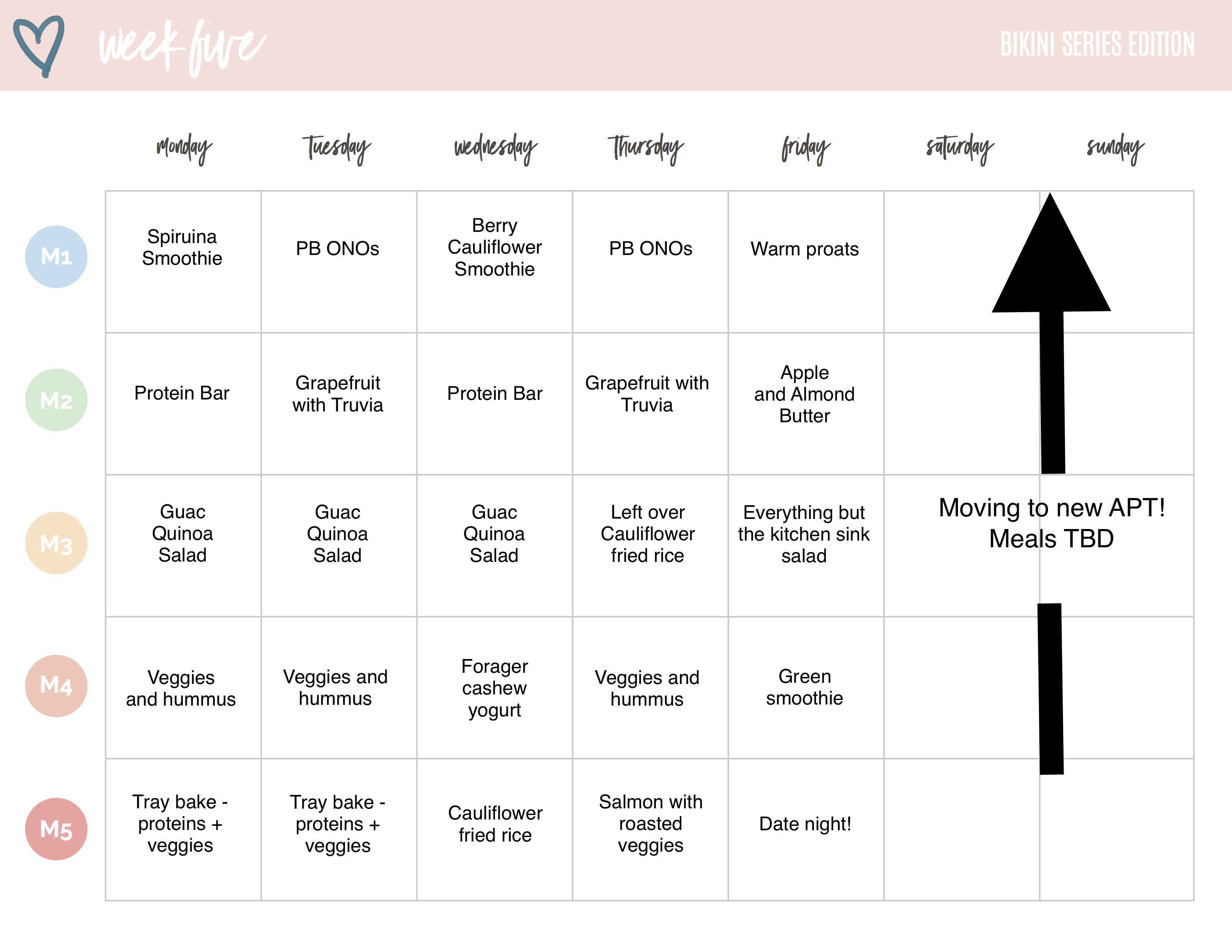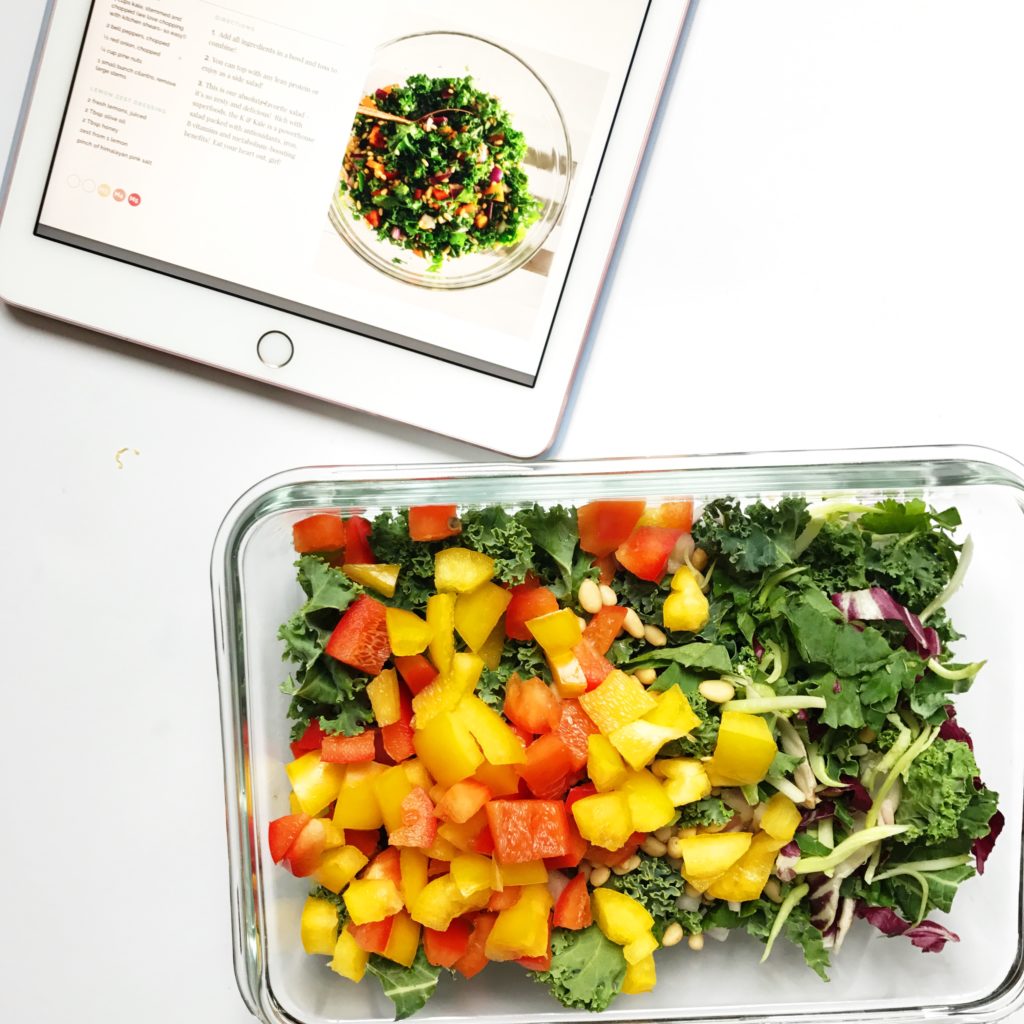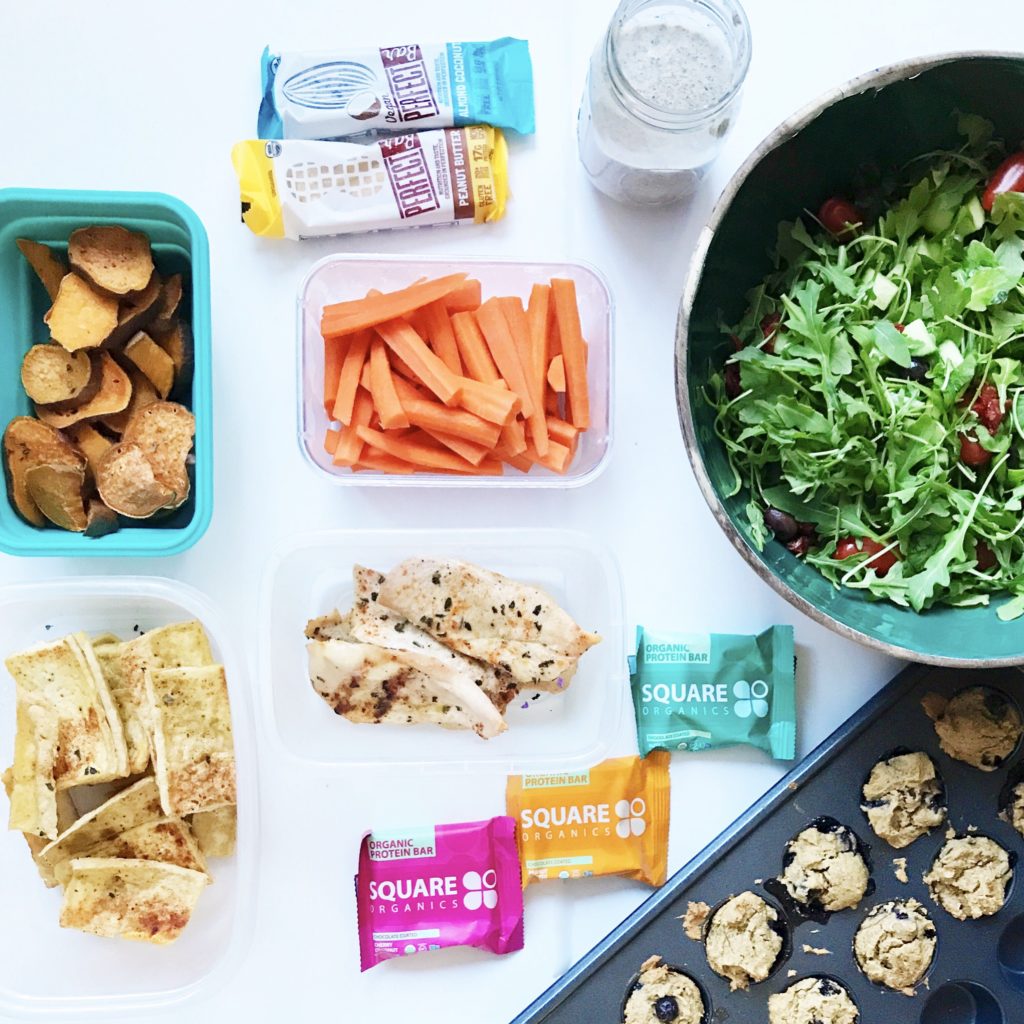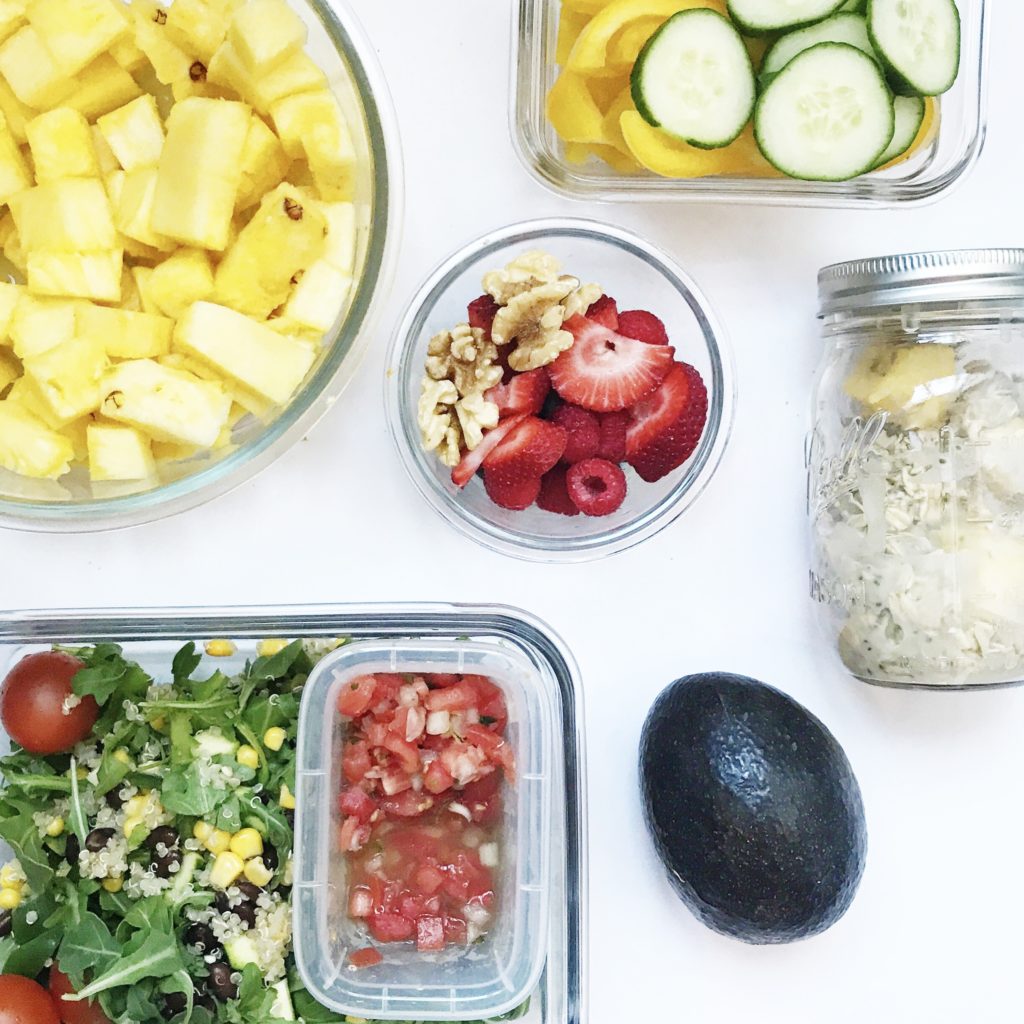
Fitness buffs and foodies everywhere are meal preppin’ up a storm. It’s hard to not acknowledge the grocery hauls and process all over social media, especially on Sundays. With that said, I understand firsthand how intimidating this process can be. Some apprehensive thoughts may include: What if I’m not a cook? Isn’t it expensive? I don’t have time during the weekend. Well, fear not friends, I am here to provide you with a handful of tips to make even the newest newbie feel like a contender in the kitchen. Let’s get started!
Plan, Plan Plan…Purchase
Planning includes everything from plotting out your meals in a journal, to making sure you have TONS of tupperware to last throughout the week, and finally, the grocery haul. I prefer glass tupperware, ya know, to class it up a bit ;-). Glass can also go directly in the microwave and dishwasher, and in the state of totally transparency, tends to look better in pictures. I bought mine from both Bed, Bath and Beyond and Amazon. Mason jars are also key in storing overnight oats, chia seed puddings and dressings.
First, evaluate what essentials you do and don’t have in your pantry. Likely, the first big “haul” will cost more money than the ones that follow. Do not be alarmed! Essentials include: quinoa, coconut oil, extra virgin olive oil, low sodium vegetable stock, sprouted bread, almond butter, organic/all natural maple syrup and local honey, chia seeds, gluten free hand rolled oats, and spices (i.e. himalayan pink salt, pepper, garlic, parika, tumeric, being some of my favorites. For added flavor, I suggest this). Throw out any temptations in both pantry and fridge; out of sight, out of mind! A clean and organized kitchen correlates with your a clean, healthy slate.
Next, create your list. Aside from the journal, utilizing the calendars Tone It Up provides is extremely helpful. See my week 5 meals for the bikini series planned below!
 Considering my upcoming move, I am sticking to easier meals that require less groceries – especially for m2 and m4. Of course, this schedule is not set in stone and can change if needed, but printing this calendar and making it tangible, automatically holds oneself more accountable, and thus, more successful.
Considering my upcoming move, I am sticking to easier meals that require less groceries – especially for m2 and m4. Of course, this schedule is not set in stone and can change if needed, but printing this calendar and making it tangible, automatically holds oneself more accountable, and thus, more successful.
Head to the grocery store early in the day in order to get the best selection of produce. While at the store, try your best to stick to the list. The dollars add up quickly, and if you are cooking for one, there is no need to go overboard. Only load up on extras of the vegetables (especially kale for dinners, salads and smoothies) and almond milk. At the end of the week, evaluate what you did or did not eat, to avoid food waste in the future. I have experienced this dilemma, especially when purchasing too much fruit.
Cook!
Organize your fridge, and before you even begin cooking, make sure to empty the dishwasher of all its contents. You will not only need to use most of your cookware and tupperware, but meal prep is much easier if you throw things in the dish washer as you go, and don’t let the sink pile up.
Alright, now time to put on that chef’s hat. Don’t be alarmed, it will feel awkward, unfamiliar and super messy at first. To be honest, I am still constantly leaving trails of crumbs (oats – i’m looking at you), but that’s why clean up comes last, right? Priorities first – washing and chopping veggies, and lean proteins. If you’re also on the Tone It up plan, or simply packing snacks, m2 and m4 are the easiest to buy prepared (Bars, yogurt and raw nuts make easy, on-the-go snacks). While the muffin recipes are more desirable, save them for last. If nothing else, the lingering smell of muffins in your kitchen is much better than garlicky proteins and veggies. Vegetables and lean proteins can be cooked on one large sheet pan, and simultaneously, prep a big batch of quinoa for the week. Dinners are complete.
If salads are your thing, prep your salad in one large bowl. Typically for me, this makes about three lunches. Prep your dressing in a mason jar and distribute the assortment evenly, then top with your protein once baked to perfection. Leftovers will likely suffice for the rest of the week, so don’t worry about those meals just yet. Lunch is complete.
For breakfast, follow a similar approach if you are making oats or chia pudding, and then store in mason jars. For smoothies, freeze any ripe fruits and veggies beforehand to avoid waste. Purchasing frozen fruit is an alternative waste and money saving option. Bananas add a great texture to smoothies, but if sugar ain’t your thing (I feel you!) try to swap bananas for frozen cauliflower or cauliflower rice. I promise you, it makes the texture thick and creamy and provides little to no taste.
Each night, squeeze all of your containers into your lunch box, to ensure you are fully packed and prepared to take on the day. Keep your weekly meal plan on the fridge, and feel the satisfying sensation of crossing off the list.
Remember, not all meal preps are created equal. Some weeks it will feel like you’ve cooked enough to feed an army, while other nights you simply made the essentials, and that’s okay. Either way, you should be extremely proud of yourself for committing to such a regimen, and preparing a week’s worth of healthy, whole foods. They will taste great and more importantly, make you feel nourished and satisfied. Added bonus is improving your cooking skills and sharing drool-worthy photos.
See some of my meal prep successes in the photos below, and let me know if you have any additional tips and tricks. Happy prepping!







